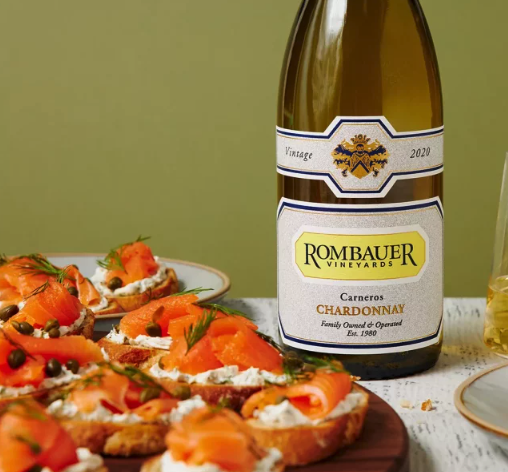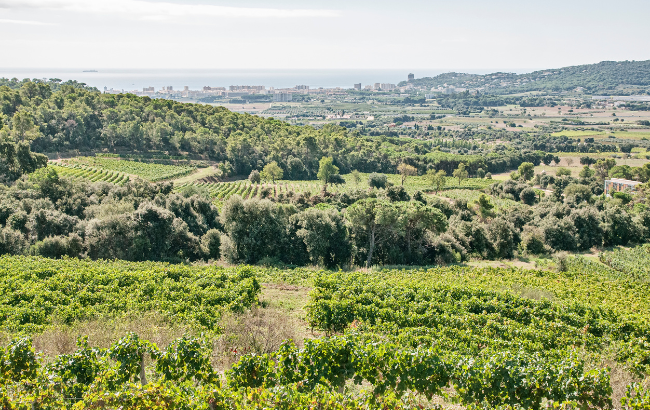Why America’s best-selling ‘luxury’ Chardonnay is going global
By Patrick SchmittDespite selling-out annually in its domestic market, America’s best-selling ‘luxury’ Chardonnay, which is made by Rombauer Vineyards, is looking to expand its global presence under new ownership.

Acquired by E&J Gallo in August last year, Rombauer Vineyards now sits within the “luxury portfolio” of the world’s largest wine producer, which wants to turn its recent acquisition into a global fine wine brand, led by Rombauer’s prized Carneros Chardonnay.
Speaking to the drinks business at ProWein on Sunday 10 March, director for Gallo’s luxury division, Edouard Baijot MW, said that he believed that Rombauer’s Chardonnay could be “the number one selling SKU in our luxury portfolio within the next 2-3 years”, before commenting, “We are investing a lot behind the brand… we think it has great potential.”
The Chardonnay, which was on pour at ProWein this year, has started to expand its distribution into European markets, such as Switzerland and the Nordics, along with the UK – where it is already present, albeit on a small scale.
Explaining the strategy, Bob Knebel, who is Rombauer’s president and CEO, said that 99% of the Californian winery’s 300,000 case production was sold in the US, but that is set to change as the brand looks to build its reputation beyond its home nation.
Before Gallo acquired Rombauer, which is based in the Napa Valley, the estate was under family ownership, and was focused on expanding its presence domestically.
“The Rombauer family weren’t looking to grow exports because they couldn’t satisfy the domestic market,” said Knebel.
However, it his belief, and Gallo’s, that the brand should expand its footprint, commenting that Rombauer is a “renowned, revered and respected domestic brand, but for the benefit of the longer term, it deserves to be respected on a global stage.”
He also recorded a latent demand for Rombauer’s wines worldwide. “Wine enthusiasts come to Napa, so we have visitors from all over the world, and the question we always get, is how can they get the wine when they are back in their country?”
Bearing in mind that Rombauer struggles to supply its customers in the US, how will the winery be able to expand internationally?
“We do have the ability to increase production, but we have to find high-quality fruit, and we have our eyes fixed on a few properties,” said Rombauer’s director of viticulture and winemaking, Richard Allen.
Currently, “the brand is under allocation”, said Baijot, while Knebel added that Rombauer “would limit growth in the US to enable us to develop export markets.”
Partner Content
Describing Rombauer as “attainable luxury at scale”, he said that around two-thirds of the winery’s production was Carneros Chardonnay which sells for a little over $40 in the US.
With at least 200,000 cases of this wine made annually, but to extremely high standards, Knebel described it as “a cult wine made by hand at scale”.
Gallo’s Luxury Portfolio comprises Louis M Martini, Orin Swift, L’Usine, Pahlmeyer, Jayson by Pahlmayer, Rombauer, Talbott Vineyards, The Language of Yes, Denner, Massican and Mount Peak – with Baijot telling db that “the big three focus brands” are Louis M Martini, Orin Swift and Rombauer, while defining luxury at Gallo as anything that sells for more than $40 a bottle in US retailers.
Speaking about the full set of wineries under his management, he said that the aim was “to show the diversity of California to all our customers”. He also said that Gallo would continue to focus on the state, rather than adding further products from other parts of the US, such as Washington State, where Gallo owns Columbia Winery.
Rombauer was founded in 1980 by Koerner and Joan Rombauer, and comprises three winery and production facilities, two tasting rooms, along with more than 280 hectares of vineyards in Carneros, Atlas Peak, St. Helena, Calistoga, Sonoma Valley, and the Sierra Foothills.
Knebel told db that the founders were no longer alive, but that the second generation had held board level positions at the winery until it was decided to sell Rombauer.
Knebel, who has been president of Rombauer for the past eight years, said that there were only “a handful of companies that could afford to buy us, and only one that understood the brand, and wanted to maintain the culture,” referring to E&J Gallo.
The Rombauer Carneros Chardonnay, which is a delicious, creamy-textured style, with a mixture of ripe yellow stone fruit and juicy citrus, complemented by flavours of toast and buttered popcorn, is in keeping with the type of white wine that made California famous for Chardonnay.
It is also a style that spawned lesser-quality, overtly-buttery lookalikes from the 90s onwards, which, in recent times, have damaged the reputation of Chardonnay, before spawning skinnier versions – notably from Australia – to highlight that the grape can be used to make light, acidic wines, even in relatively warm climates. Since then, however, the pendulum has swung back, with buttery styles back in vogue.
Nevertheless, Allen told db, “bold, rich, ripe Chardonnay never went out of fashion in California.”
Related news
The winemaking nations hit hardest by Trump tariffs
Hospices de Nuits-Saint-Georges auction: bucking the trend
‘Liberation Day’ or liquor lockdown? Trump’s tariffs rattle the wine & spirits world




